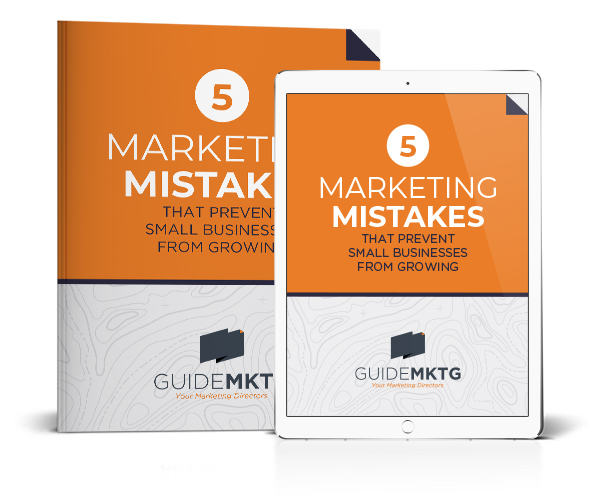Can you sum up your business’ primary purpose in just a few words? When your leads and customers think of your brand, does a phrase or slogan come to mind? Can you deliver your business’ power-packed, emotional, relatable message on the back of a business card?
If the answer’s no, it’s time to start working on your tagline and one-liner!
In this article, we’ll break down exactly where and when you should use your tagline and one-liner, how the two tools differ, and why these tools are an integral part of your business’ marketing message. So grab a notebook and get ready to flex your creativity. It’s time to add two more messaging tools to your marketing toolbox!
Let’s start with a quick refresher on taglines and one-liners:
What’s a tagline?
A tagline is a quick phrase that describes your business’ unique selling proposition, your mission, or how you aim to make your customers feel. Unlike slogans, which may vary by season, audience, or service, your tagline is essentially your business’ verbal logo— a key asset that’s instantly recognizable and rarely changes.
Here are a few examples of taglines you’re probably familiar with:
- Nike: “Just do it.”
- Allstate: “You’re in good hands”
- BMW: “The ultimate driving machine”
These famous taglines are a great example of how businesses can use just a few words to convey an entire message. They provide clarity, entertainment, or focus to highlight your business’ purpose, culture, mission, or solution. And they’re a great way to generate an emotional response from your target audience.
What’s a one-liner?
A one-liner is a short description that declares who your company is and why you exist in the world. It describes the key problem your target audience is facing, and proudly proclaims your creative solution for it— all in one or two sentences (or less).
Here are a few examples of StoryBrand one-liners:
- Most business leaders struggle to talk about what they do, so we’ve created a communication framework that helps people clarify their message. When you clarify your message, word starts to spread about your company, customers engage more, and your business grows.
- With 110 people moving to Nashville every day, people are wasting more and more time sitting in traffic. With a Circuit E-Bike fitted just for you, you’ll get to work faster and add hours back to your day.
- Does marketing feel like an uphill battle? Lantern fuels your marketing with a clear message and plan, so you don’t get bogged down by details.
In these examples, you can see how one-liners successfully distill a lot of quality information into a short clip. And because one-liners are more descriptive, they’re a great way to deliver your brand’s promise while still sparking an emotional response.
There are a few key differences between taglines and one-liners
While a great tagline can be creative and flexible, one-liners are more formulaic. A catchy tagline is punchy, clever, and short. A one-liner is powerful, descriptive, and a better representation of your overall messaging.
Think of it this way: A one-liner describes your overall brand purpose, while your tagline is a quick, memorable slogan every customer can recognize in an instant. One is a standalone marketing asset, and the other is a complementary accessory for your brand.
Marketing campaigns benefit from both taglines and one-liners, when they’re used correctly.
Why do you need a business tagline and a one-liner?
While your tagline is a memorable phrase that keeps your brand at the top of your customers’ minds, it likely doesn’t make much sense to people who have never heard of your business before. But your one-liner is a strong, descriptive phrase you can use to share a complete overview of your business in just a couple sentences.
Put another way, your tagline is a great slogan for those who are already familiar with your brand. But a one-liner is the most effective message you can share with a cold audience.
How to write a memorable tagline:
You don’t need to be an exceptional copywriter with decades of experience building marketing campaigns to create a tagline. You just need a clear idea of what your company does and who your customers are.
Need help defining your ideal customer? Use this handy target market worksheet!
Once you have your clear purpose and ideal audience in mind, you can start drafting your own tagline. At Lantern, we suggest using this simple template to start building a descriptive tagline in seven words or less:
We {do this} for {whom}
Or put another way:
{What we do} makes {our customers} {insert emotional term}
Use this template to come up with several versions of your business tagline. You can change up the order, use different words, and get creative with this process. After all, great taglines and slogans take some effort!
Once you’ve used this template to brainstorm some tagline ideas, these quick tips will help you create a tagline that really stands out:
1. Use emotional words
Successful taglines are emotional taglines. If you want to make a memorable impression on your customers, use words that connect with them!
Emotional words like these can stir a positive response:
- Best, ultimate, or premium
- Love, care, or protect
- Imagine, believe, or dream
- Beauty, happiness, peace, or joy
It’s not a firm rule that great taglines have these exact words in them. But would Coca Cola have as memorable a tagline if they said “open a bottle” instead of “open happiness”?
Different slogans elicit different responses, but using emotional words like these can help your consumers feel like they’re a part of your brand’s community.
2. Showcase success
This tip is important to keep in mind, whether you’re writing your descriptive tagline or one-liner: If you’re going to talk about your company’s products or services, focus on the success your customers will experience when they engage with your brand.
Many taglines are overly braggy or salesy. They position you as the center of the story (instead of your customer), and don’t paint a picture of how your company’s products or services make life better.
But by showcasing the great outcome your customer can experience, you invite them to engage with your brand— and become more memorable in the process.
3. Use First Person Pronouns
Using “You” or “Your” in your tagline helps your audience connect with the slogan on a more personal level. It shows your customers that you’re speaking directly to them.
4. Keep it short!
A great business tagline is as short as possible— seven words or less is ideal. The more brief and precise your tagline is, the more memorable it becomes.
How to write a great one-liner:
So now you’ve got a great tagline in your marketing toolbox, but that’s only half of the puzzle! Next, start working on crafting your one-liner. You can use one of these simple templates to create a memorable phrase:
Many [Target Audience] feel [internal problem] when [external problem]. [Your company or Service offer] helps you [success or outcome] without [failure].
Or try this one:
Many [Target Audience] feel [internal problem] when [external problem]. [Your company or Service offer] helps you [success or outcome] without [failure].
Now, use these tips to continue editing your one-liner draft:
1. Be clear
Your one-liner is not the place to be punny! The more clear you are about the problem you solve and how your solution improves the life of your client, the more memorable it becomes!
2. Don’t be a hero
You may be the source of your customer’s solution, but the best one-liners frame the brand as the guide— not the center of the story. Your one-liner should focus on your client, what they’re experiencing, what they need, and how their life will change when they engage your business.
3. Get visual
When you talk about the success your audience will experience when they buy your service, use visual language to create a relatable picture.
Try using sensory words like:
- Soaring or staggering
- Sweet, soft, warm, or quiet
- Smell, feel, hear, sense, or taste
Descriptive words give your one-liner a life of its own— helping your listener internalize the success and connect with your brand on a more meaningful level.
Now that you’ve crafted your tagline and one-liner, here’s are 5 ways put them to work in your next marketing campaign
- Add your tagline to your business email signature
- Add your tagline to your social media profiles + post your one-liner in the About or Description section of your company pages
- Include your tagline on short print materials (think business cards or stationary) and your one-liner on long-form print materials (brochures or posters)
- Add both your tagline and one-liner to your website
- Include your tagline or one-liner in upcoming ads, social posts, and educational content to continue getting these memorable phrases out there!
Want more tips for leveraging your one-liner like a growth-minded B2B? Check out our article on the 7 best places to use your business one-liner!
At Lantern, we help B2Bs develop habit-worthy marketing campaigns
We help service-based B2Bs create better marketing habits that save money, generate more sales, and bring in more customers. Our unique Lantern Method is focused on the three C’s of marketing: Get clear on your audience, tell a compelling story, and be consistent.
To learn more and talk to our team, start here.





